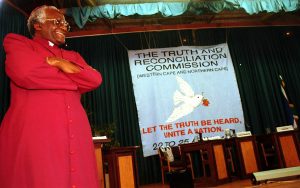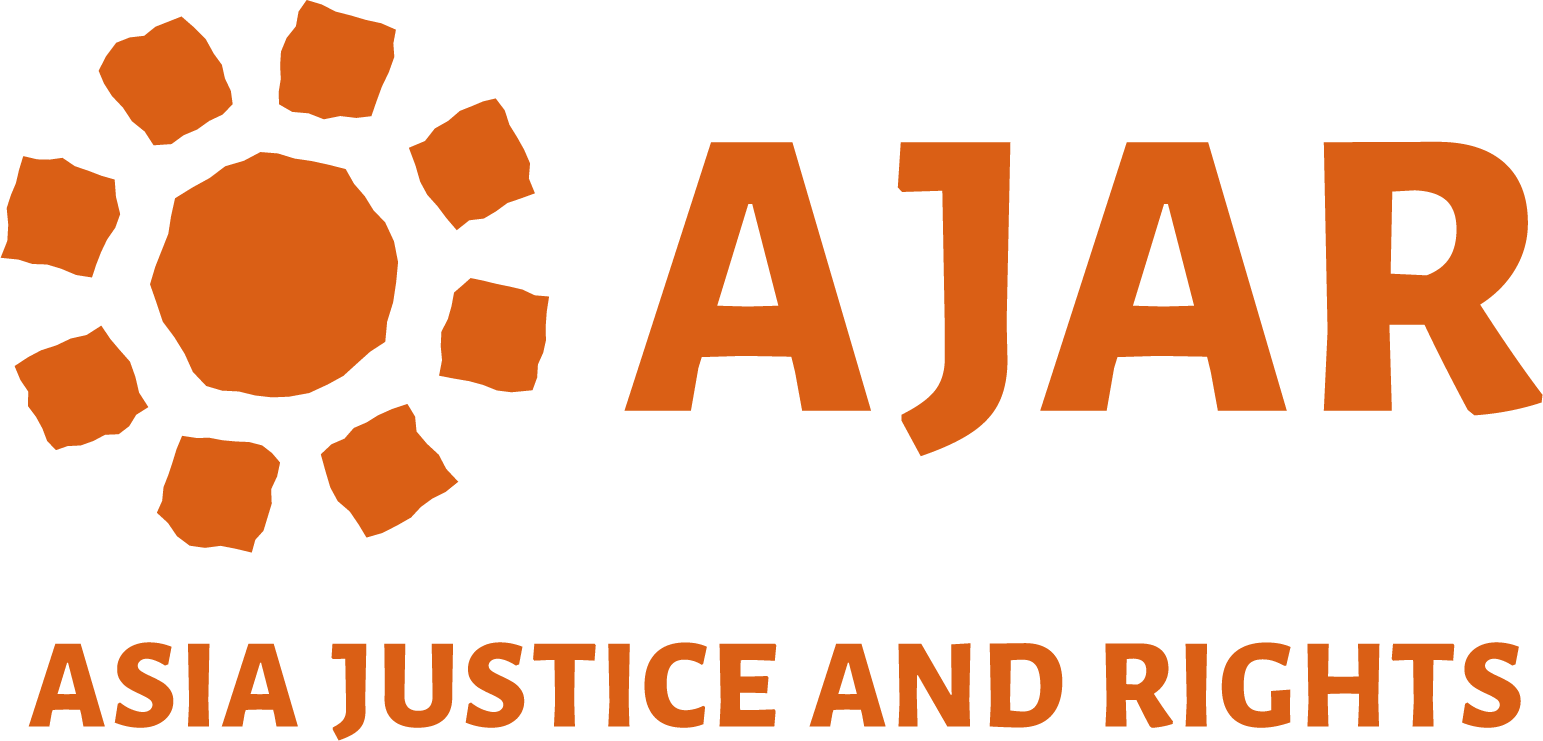
Archbishop Desmond Tutu, chair of the TRC, during the first hearings of the Truth and Reconciliation Commission(TRC) in Cape Town. 22-25/04/1996 Photo © Rodger Bosch
The South African Truth and Reconciliation Commission (TRC) was set up by the Government of National Unity to help deal with what happened under apartheid. The conflict during this period resulted in violence and human rights abuses from all sides.
The TRC was based on the Promotion of National Unity and Reconciliation Act, No 34 of 1995 and served as a court-like restorative justice body assembled in South Africa after the end of apartheid. Witnesses who were identified as victims of gross human rights violations were invited to give statements about their experiences, and some were selected for public hearings.
Perpetrators of violence could also give testimony and request amnesty from both civil and criminal prosecution. The TRC, which was the first to stage public hearings, was seen by many as a crucial component of the transition to full and free democracy in South Africa.
The TRC effected its mandate through 3 committees: the Amnesty Committee, Reparation and Rehabilitation (R&R) Committee and Human Rights Violations (HRV). The TRC had a number of high-profile members, including Archbishop Desmond Tutu (chairman), Alex Boraine (deputy chairman), Sisi Khampepe, Wynand Malan, Klaas de Jonge and Emma Mashinini.
THE COMMITTEES OF THE TRC
Human Rights Violations (HRV) Committee
The task of the HRV Committee was to investigate human rights abuses that took place between 1960 and 1994, based on statements made to the TRC. The Committee established the identity of the victims, their fate or present whereabouts, and the nature and extent of the harm they have suffered; and whether the violations were the result of deliberate planning by the state or any other organisation, group or individual. Once victims of gross human rights violations are identified, they are referred to the Reparation and Rehabilitation Committee.
Reparation and Rehabilitation (R&R) Committee
The enabling act empowered the R&R Committee to provide victim support to ensure that the Truth Commission process restores victims’ dignity; and to formulate policy proposals and recommendations on rehabilitation and healing of survivors, their families and communities at large. The envisaged overall function of all recommendations is to ensure non repetition, healing and healthy co-existence. A President’s Fund, funded by Parliament and private contributions, has been established to pay urgent interim reparation to victims in terms of the regulations prescribed by the President.
Amnesty Committee(AC)
The primary function of the AC is to consider that applications for amnesty were done in accordance with the provisions of the Act. Applicants could apply for amnesty for any act, omission or offence associated with a political objective committed between 1 March 1960 to 6 December 1993. The cut-off date was later extended to 11 May 1994. The final date for the submission of applications was 30 September 1997. Being granted amnesty for an act means that the perpetrator is free from prosecution for that particular act.
The hearings started in 1996. The mandate of the commission was to bear witness to, record, and in some cases grant amnesty to the perpetrators of crimes relating to human rights violations, as well as offering reparation and rehabilitation to the victims. A register of reconciliation was also established so that ordinary South Africans who wished to express regret for past failures could also express their remorse.
The Commission found more than 19,050 people had been victims of gross human rights violations. An additional 2,975 victims were identified through the applications for amnesty. In reporting these numbers, the Commission voiced its regret that there was very little overlap of victims between those seeking restitution and those seeking amnesty.
A total of 5,392 amnesty applications were refused, granting only 849 out of the 7,111 (which includes the number of additional categories, such as “withdrawn”)
